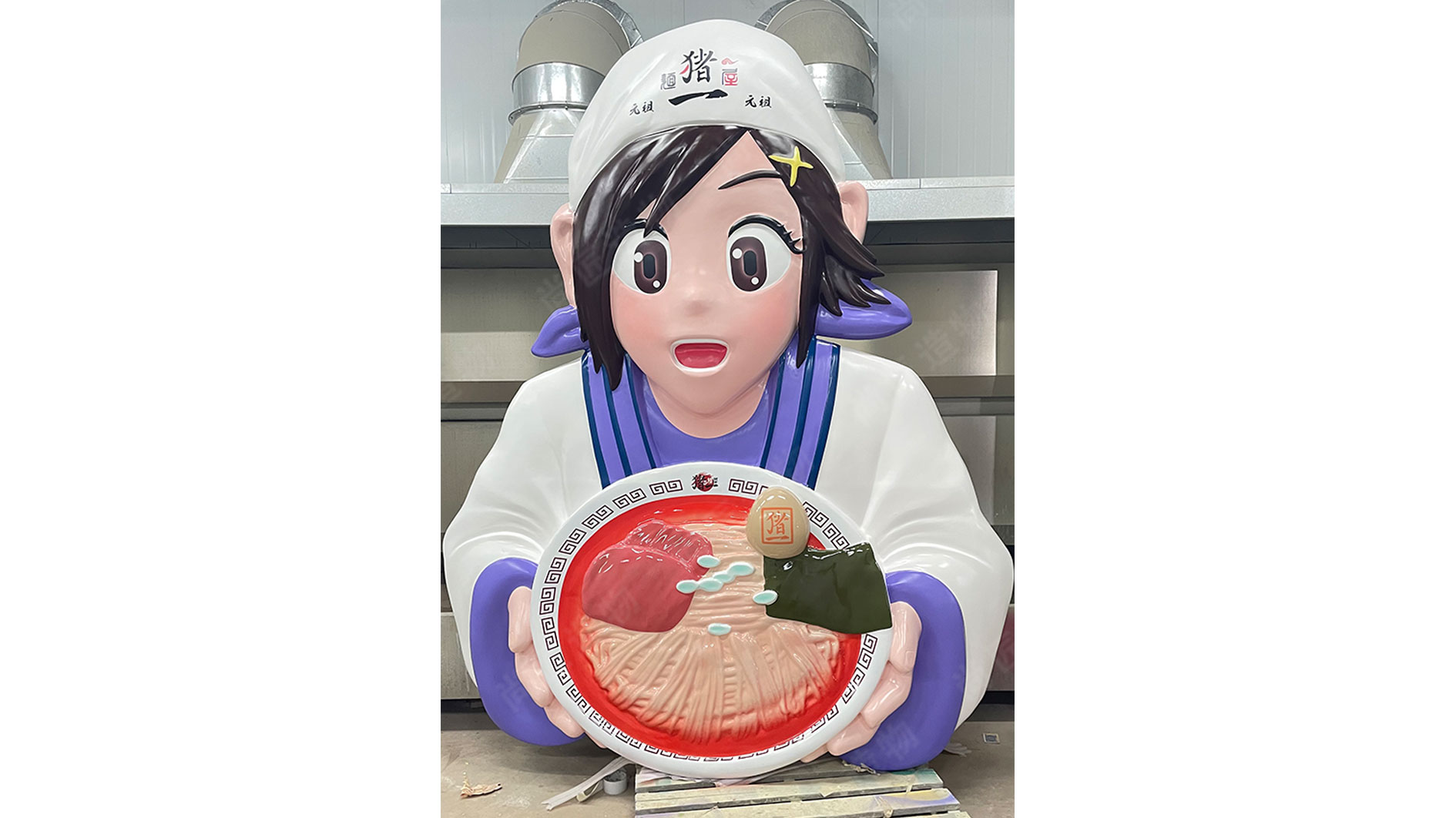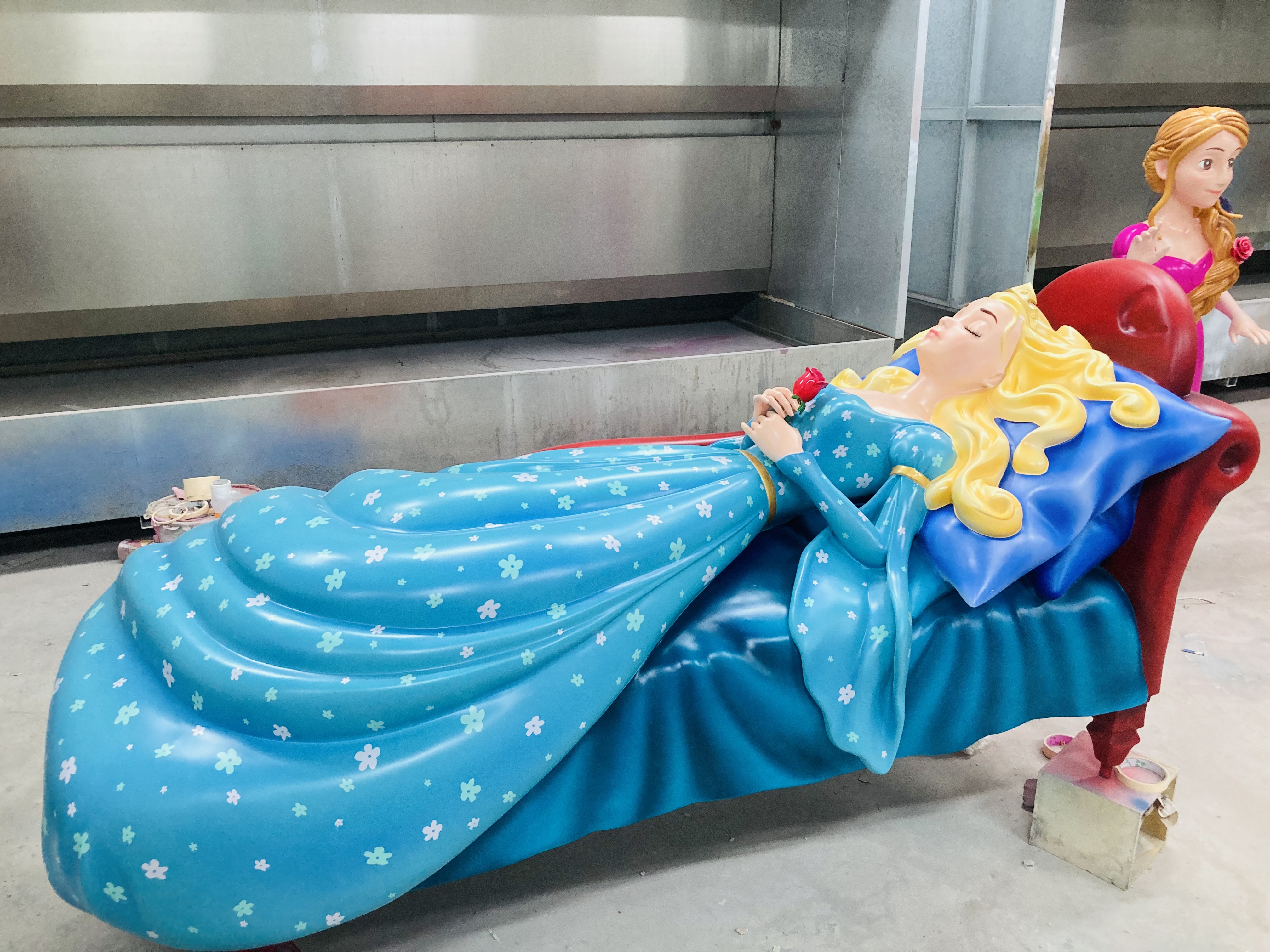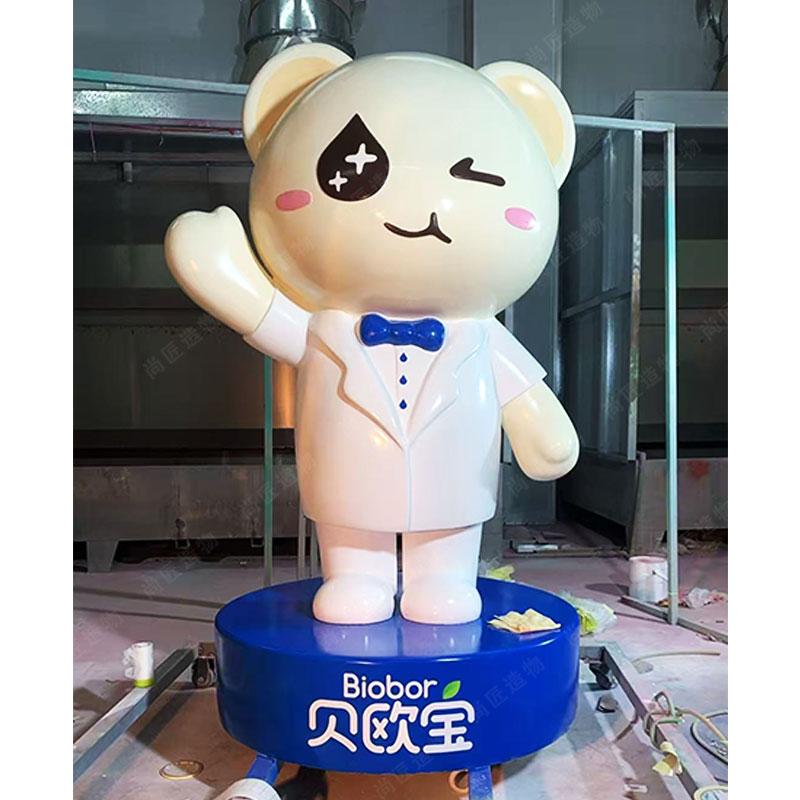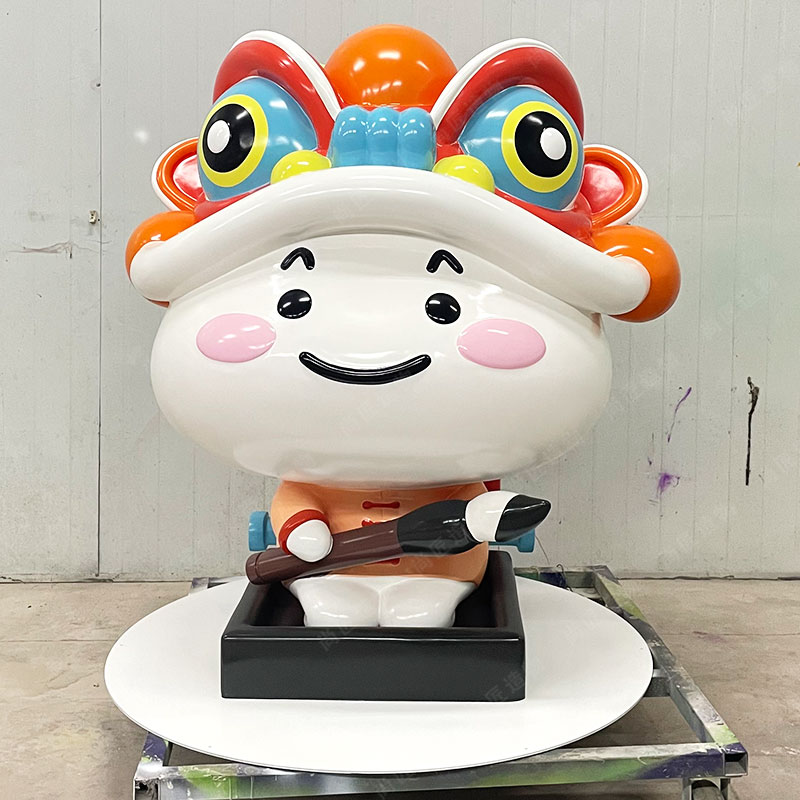Key Takeaways
Custom fiberglass sculptures designed for outdoor use combine artistic appeal with functional resilience, making them ideal for branding and public engagement. Below are critical insights to consider when planning these installations:
- Material Advantages: Fiberglass outperforms traditional materials like bronze or concrete in weight, corrosion resistance, and adaptability to detailed designs.
- Climate Adaptation: Advanced UV-resistant coatings and reinforced bases ensure sculptures withstand extreme temperatures, heavy rain, and prolonged sun exposure.
- Strategic Branding: Large-scale mascots placed in high-traffic areas (e.g., parks, event venues) can increase brand visibility by up to 67%, according to a 2023 tourism marketing study.
"Fiberglass allows artists to balance structural integrity with creative freedom—essential for crafting mascots that embody a brand’s identity."
— Lena Torres, Public Art Engineer
| Feature | Fiberglass | Traditional Materials |
|---|---|---|
| Weight | 200–400 lbs | 800–1,200 lbs |
| Lifespan | 15–25 years | 10–15 years |
| Maintenance Cost | $200/year | $500/year |
Pro Tip: For long-term durability, apply anti-graffiti sealants annually and inspect anchor systems before seasonal weather changes.
When integrating sculptures into public spaces, prioritize locations with high foot traffic and complementary surroundings. For example, placing mascots near entry points or photo hotspots maximizes engagement. Lightweight fiberglass also simplifies transportation and temporary installations for events, reducing setup costs by 30–40% compared to heavier alternatives.

Weatherproof Mascot Design Essentials
Effective weatherproof mascot design begins with material selection and structural engineering. Fiberglass, a composite of resin and glass fibers, offers superior resistance to moisture, temperature fluctuations, and UV exposure compared to traditional materials like wood or untreated metals. To ensure longevity in outdoor settings, designs must incorporate seamless construction to prevent water infiltration, reinforced bases for stability in high winds, and UV-stable pigments to maintain vibrant colors.
Advanced drainage systems integrated into hollow components prevent water accumulation, while protective coatings—such as marine-grade gelcoat—add an extra barrier against corrosion and fading. For installations in coastal or high-humidity areas, designers often combine fiberglass with stainless steel sculpture frameworks to enhance load-bearing capacity without compromising weather resistance. These technical considerations ensure branded mascots remain visually striking and structurally sound for years, even in environments with heavy rainfall, extreme heat, or salt spray.

Outdoor Branded Sculpture Benefits
Outdoor branded sculptures made from custom fiberglass offer distinct advantages for organizations seeking lasting visual impact. Unlike traditional materials like stone or metal, fiberglass combines structural resilience with exceptional weather resistance, maintaining vibrant colors and precise details despite prolonged exposure to UV rays, rain, or temperature fluctuations. This durability reduces long-term maintenance costs while ensuring consistent brand representation in high-traffic areas such as parks, corporate campuses, or Realistic sculpture installations.
The lightweight nature of fiberglass simplifies transportation and installation, enabling temporary setups for events or seasonal promotions without heavy machinery. At the same time, its resistance to corrosion, rust, and pests makes it ideal for permanent installations in coastal or humid environments. Custom designs can incorporate intricate brand elements—from logos to mascot features—enhancing recognition without compromising artistic integrity. Additionally, fiberglass sculptures can be engineered with reinforced bases to withstand wind loads or vandalism, aligning with safety standards for public spaces. By merging practical longevity with creative flexibility, these artworks serve as both functional branding tools and engaging landmarks.
Tourism Attraction Sculpture Solutions
Fiberglass sculptures offer tourism destinations a strategic tool to amplify visitor engagement while addressing practical challenges of outdoor installations. Unlike traditional materials like bronze or stone, fiberglass sculpture combines structural resilience with design flexibility, enabling attractions to showcase large-scale mascots or thematic artworks without compromising on durability. These custom pieces withstand UV exposure, temperature fluctuations, and moisture—critical for coastal resorts, theme parks, or historic sites exposed to year-round foot traffic.
Lightweight properties simplify transportation and installation, reducing costs for temporary exhibits or permanent landmarks. For instance, interactive sculptures at adventure parks or wayfinding art in heritage districts benefit from fiberglass’s adaptability to intricate shapes and vibrant finishes. By integrating branded mascots into entry plazas or photo hotspots, attractions create shareable moments that reinforce identity and encourage social media visibility. Maintenance requirements remain minimal compared to metal alternatives, ensuring long-term value for high-traffic zones. This alignment of aesthetic impact and functional reliability positions fiberglass as a forward-thinking choice for tourism infrastructure upgrades.
Lightweight Event Sculptures for Promotion
Fiberglass sculptures offer event organizers a strategic advantage through their combination of portability and visual impact. Unlike heavier materials like stone or metal, fiberglass sculptures weighing 60-80% less simplify logistics for temporary installations at trade shows, festivals, or product launches. Their modular design enables rapid assembly—often requiring only basic tools—while maintaining structural integrity in crowded environments.
For brands leveraging recognizable mascots or IP character sculptures, these pieces become three-dimensional ambassadors that interact with audiences physically and through social media. Event-specific customizations, such as integrating QR codes or hashtag displays, turn sculptures into participatory marketing tools. Weather-resistant coatings ensure consistent color saturation and surface quality during multi-day outdoor events, even under UV exposure or light rain.
The material’s adaptability supports cost-effective reuse across multiple campaigns. A single sculpture can be repainted, resized, or digitally augmented for different promotions, extending its lifecycle while preserving brand continuity. Venues increasingly favor fiberglass for compliance with weight restrictions on stages or temporary flooring, reducing setup costs by up to 35% compared to traditional alternatives.

Public Space Art Durability Strategies
When implementing branded sculptures in high-traffic outdoor areas, material selection and engineering choices directly impact longevity. Fiberglass offers inherent advantages for public installations due to its corrosion resistance and structural stability, but additional safeguards ensure decade-spanning performance. Strategic design elements—such as rounded edges to minimize wind resistance and reinforced bases for load distribution—prevent weather-related wear. UV-resistant gel coatings maintain color fidelity, while hydrophobic sealants protect against moisture penetration in humid or rainy climates.
Proactive maintenance protocols further extend artwork lifespans. Quarterly inspections of anchoring systems and surface integrity allow early detection of environmental stress points. Gentle cleaning with pH-neutral solutions removes pollutants without degrading protective layers. For installations in coastal regions, anti-salt spray treatments prevent corrosive buildup. These measures prove particularly valuable for interactive pieces like Cartoon sculpture, where frequent public engagement demands robust construction. By combining advanced materials science with adaptive preservation techniques, outdoor sculptures maintain brand messaging clarity while enduring fluctuating temperatures, precipitation cycles, and physical contact.

Harsh Climate Mascot Performance Guide
Designing mascot sculptures for extreme weather requires balancing artistic vision with structural science. Fiberglass’s inherent resistance to UV rays, thermal expansion, and moisture makes it ideal for outdoor installations facing intense sun, heavy rain, or subzero temperatures. Unlike traditional materials like wood or metal, fiberglass does not warp, rust, or degrade under prolonged exposure, ensuring vibrant colors and sharp details remain intact for years. For high-wind zones, engineers integrate weighted bases and aerodynamic shaping to prevent toppling, while kinetic sculpture principles may inform flexible joints in regions prone to seismic activity.
Rigorous testing protocols simulate decades of weathering in controlled environments, assessing adhesion of protective gel coatings and resin stability. Coastal installations, for example, undergo salt-spray testing to guard against corrosion, while desert-bound pieces are evaluated for sand abrasion resistance. By combining material innovation with climate-specific engineering, these sculptures maintain brand visibility and public engagement even in the planet’s most unforgiving environments—from alpine ski resorts to tropical tourist hubs.

Fiberglass vs Traditional Sculpture Materials
When selecting materials for outdoor sculptures, fiberglass offers distinct advantages over traditional options like bronze, stone, or wood. Unlike bronze, which requires heavy structural supports and costly maintenance to prevent corrosion, fiberglass is inherently rust-resistant and weighs up to 70% less. This lightweight nature simplifies installation and reduces transportation costs—critical factors for large-scale mascot sculptures used in events or public spaces. Stone sculptures, while visually striking, are prone to cracking in freeze-thaw cycles and often lack the design flexibility needed for intricate branded details. Wood, though affordable, deteriorates rapidly when exposed to moisture or pests, demanding frequent replacements.
Fiberglass addresses these limitations through its moldable composition, enabling precise replication of logos, textures, and complex shapes. Its layered resin construction provides UV stability, preventing fading even in direct sunlight, while reinforced surfaces resist impacts better than brittle stone or softwood. For long-term projects in harsh climates, fiberglass’s minimal upkeep—requiring only occasional cleaning—contrasts sharply with the intensive preservation needs of traditional materials. By balancing durability with creative adaptability, fiberglass emerges as a practical choice for organizations prioritizing both artistic impact and cost efficiency over decades of outdoor use.

Boost Foot Traffic With Custom Art
Custom fiberglass sculptures offer more than aesthetic appeal—they serve as strategic tools for attracting visitors to commercial and public spaces. Unlike generic decor, branded mascots and thematic installations create memorable visual anchors that draw attention and encourage social sharing. Retail centers, for example, can leverage whimsical mascot sculptures near entrances to spark curiosity, while parks might install interactive fiberglass art to incentivize exploration. The lightweight nature of fiberglass allows for easy relocation, enabling businesses to refresh installations seasonally or align them with marketing campaigns.
Data from urban planning studies shows that public art installations increase foot traffic by 12-18% in surrounding areas, with branded sculptures amplifying this effect through recognizable imagery. A themed fiberglass sculpture at a shopping district entrance, for instance, can become a photo hotspot, driving organic social media promotion. Similarly, corporate campuses using custom mascots report higher visitor engagement during open-house events. By blending artistic appeal with functional design, these durable installations create lasting impressions that translate into repeat visits—proving that art isn’t just decorative but a measurable investment in community and customer engagement.

Conclusion
Custom fiberglass sculptures have emerged as a versatile solution for outdoor branding, event promotion, and public art installations. Their durability in harsh climates, combined with lightweight construction, ensures they withstand environmental challenges while remaining practical for transportation and setup. Unlike traditional materials like metal or stone, fiberglass offers a balance of resilience and design flexibility, enabling intricate mascot details without sacrificing structural integrity.
For businesses and municipalities, these sculptures serve dual purposes: enhancing visual appeal and reinforcing brand identity in high-traffic areas. Tourism sectors benefit from their ability to create memorable landmarks, while event organizers leverage their portability for temporary promotions. By prioritizing weather-resistant engineering and strategic placement, organizations can maximize long-term value from these installations. As outdoor spaces continue to evolve as engagement hubs, investing in tailored fiberglass art remains a logical step for blending creativity with functional marketing objectives.
Frequently Asked Questions
How long do custom fiberglass sculptures last outdoors?
Fiberglass sculptures typically withstand 10–15 years of outdoor exposure when properly sealed and maintained. Their resin base resists UV rays, moisture, and temperature fluctuations better than wood or metal.
Are these mascot sculptures too heavy for temporary events?
No—fiberglass is 30% lighter than bronze and 60% lighter than concrete. Most event-sized sculptures weigh under 50 pounds, allowing easy transport and setup without structural reinforcements.
Can intricate brand logos be reproduced accurately?
Yes. Fiberglass molds capture fine details down to 0.5mm precision, ensuring crisp logos and textures. Post-casting hand-painting adds brand-specific colors with fade-resistant epoxy coatings.
What maintenance do they require in coastal or rainy climates?
Bi-annual cleaning with mild soap and water prevents salt or pollutant buildup. A protective wax layer applied every 2–3 years maintains surface integrity in harsh environments.
How do costs compare to 3D-printed or metal sculptures?
Fiberglass costs 40% less than stainless steel for large installations and offers better detail retention than most 3D-printed plastics. Lifetime maintenance expenses are also 25–35% lower than traditional materials.
Can damaged sculptures be repaired?
Professional restoration teams can fix cracks, chips, or color fading using original mold templates and matched pigments. Most repairs take 1–3 weeks depending on damage severity.
 ch
ch English
English





